As the boats cruise up and down the Douro River, many passengers on board hardly notice the tributary river. As they sip their wines and note the vineyard estates along the banks, they might take a moment to pause and look past the disused train bridge and note the low, rectangular building on the hilltop above. The wide mouth of the Côa River below is the end of a watercourse that snakes among the hills of the Guarda district. The water itself and the valley that contains it both tell (and still hide) significant stories that stretch back far longer than the written record. There is treasure within the Côa Valley that enriches the heritage of the entire world.
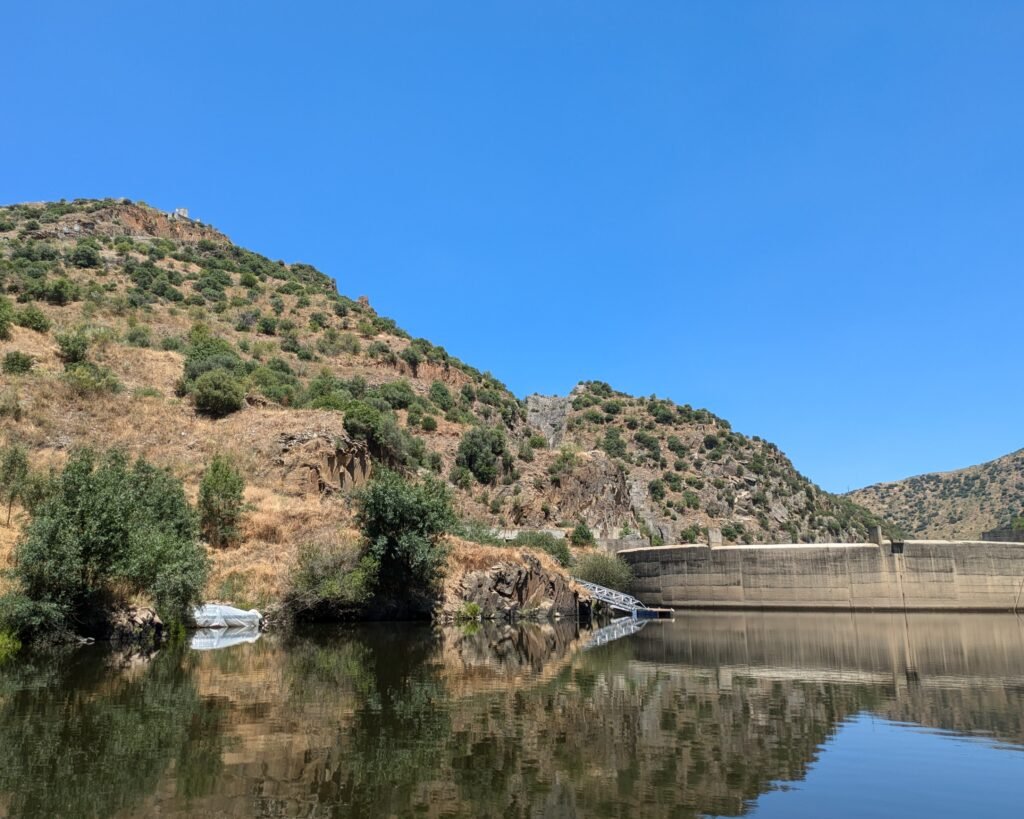

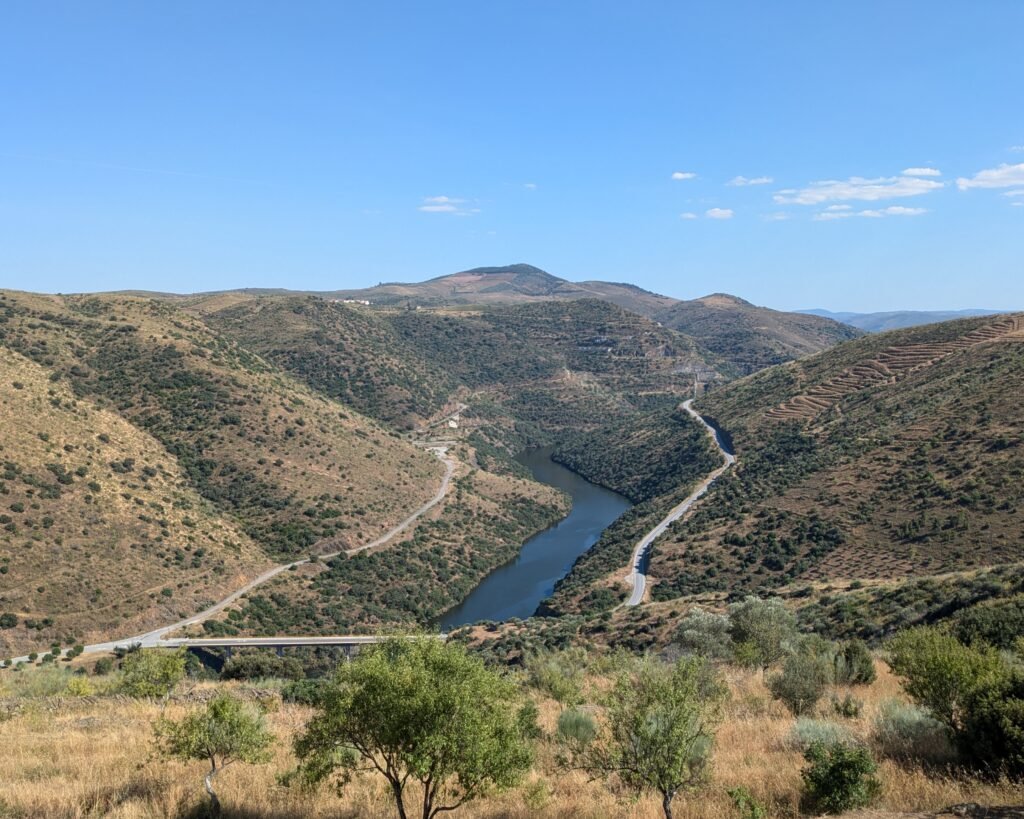
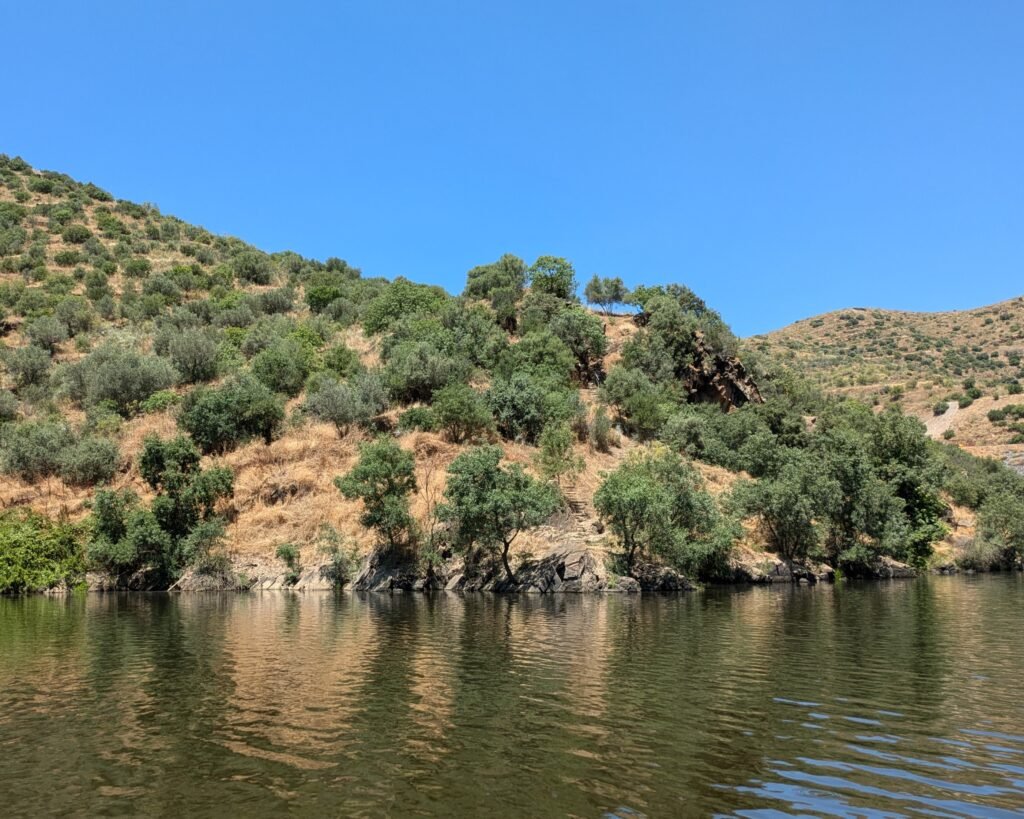
The Côa River flows into the Douro River (interestingly enough, from South to North) just below the town of Vila Nova de Foz Côa. This “New Village” dates back to the 13th century, but the record of human habitation dates far further back. Just how far back became very clear only a short time ago.
In the 1980’s the Portuguese electric company, EDP, started building a dam on the River Côa. As the work progressed and the area was being surveyed, some prehistoric (and more recent) paintings and rock carvings were discovered in the valley. However, in 1991 archaeologist Nelson Rebanda found engravings near the dam site that dated back to the Paleolithic period, from 10 to over 20 thousand years before the present. Unlike other sites in Europe, these prehistoric artworks were not in caves but in the open air. When these findings were made known, there was great disagreement about whether to go forward and reap the benefits, or to halt the construction and prevent the flooding of the entire valley. The local community was divided, as was the international community of archaeologists.
Controversy led to further studies, including ones backed by EDP to disprove the engravings’ age. UNESCO was petitioned to review the site. They sent a team led by French prehistorian, Jean Clottes. He said that the valley was “the biggest open air site of palaeolithic art in Europe, if not in the world.” Further investigations found more engravings, many already submerged by the construction to date as well as by an earlier dam. Protests against the dam became prolific, including amongst the schoolchildren of Foz Côa. “The engravings don’t know how to swim!” was the battle cry of the protestors.
Things came to a head in the Portuguese governmental elections of 1995. The newly elected Prime Minister, António Guterres, had promised to halt the dam and he did. In 1997, the Archaeological Park of the Côa Valley was created to protect and preserve the engravings. An application was made to declare the Côa Valley as a UNESCO World Heritage site. In record time, this was approved in 1998. (This was extended in 2010 to include the Siega Verde site in Spain.)
Archaeological work has been ongoing since then. Excavations in 1999 at the Fariseu site were able to accurately date the engravings to the Upper Paleolithic by finding a portion of the carved rock that had fallen and been buried in sediment that could be scientifically dated. More sites have been found: presently they count 90 sites with over 1,600 engraved stones featuring many thousands of figures. As recently as 2022, a new stone was excavated that included one of the largest prehistoric figures ever, at 3.5 meters across.
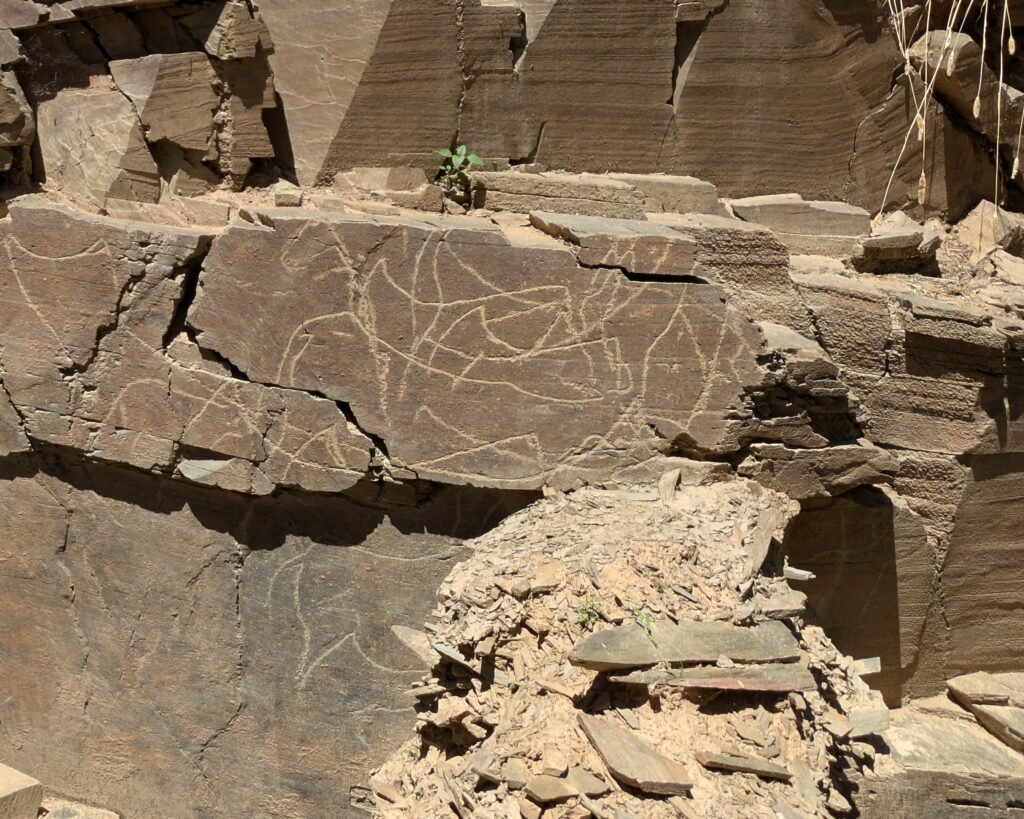

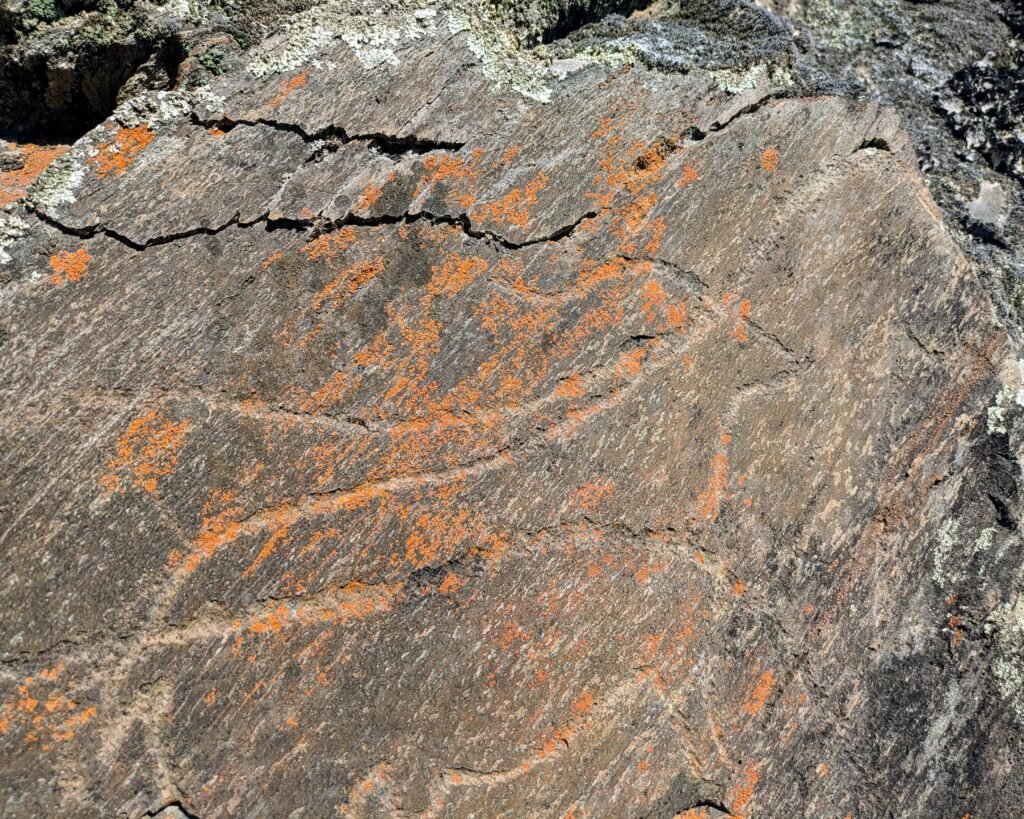
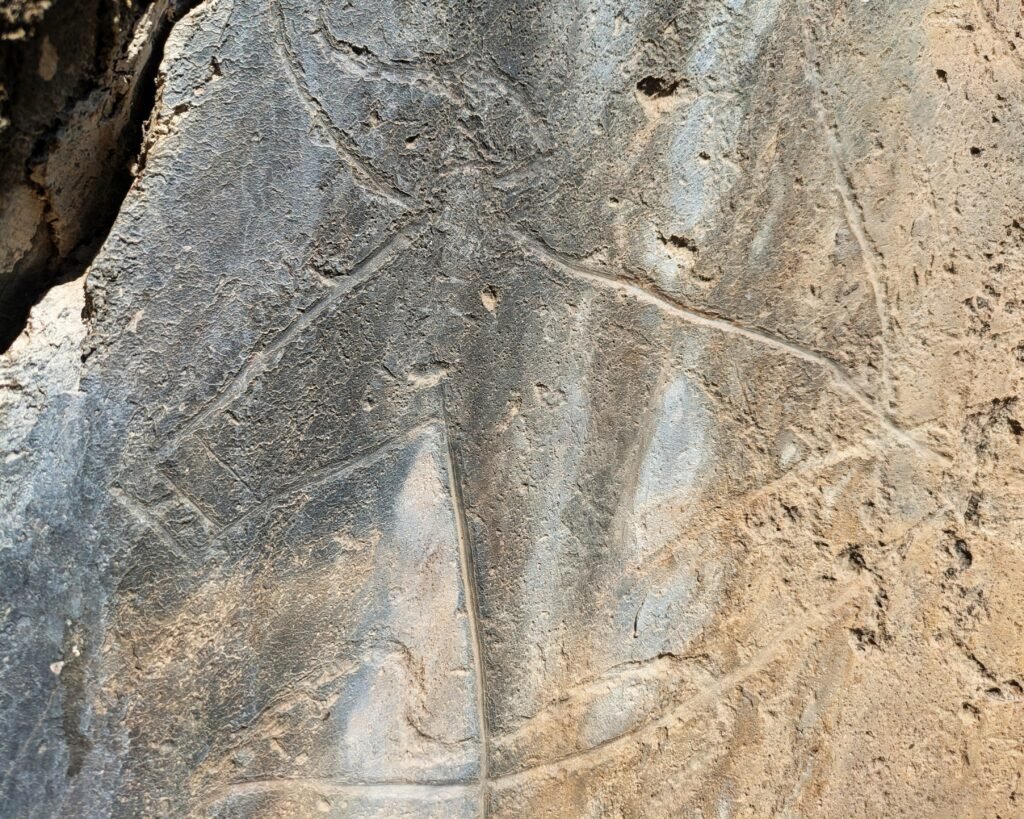
The engravings vary from site to site, but there are many consistencies. Most carvings feature large herbivorous animals: horses, goats, deer, and aurochs (a wild bull much larger than domesticated cattle, which died out in the 17th century). There are a few human figures, as well as some geometric figures. They are carved into flat surfaces of schist, often with multiple figures carved into the same section, one on top of another. Techniques included pecking (using a hard stone to hammer holes into the schist), abrasion (carving thick lines with a back and forth motion), and filiform or fine-line engraving (carving a thin line). In addition to the engravings on the large fixed stones, portable works (small engraved stones) have also been discovered.
What purpose was behind the carvings? Were they art for art’s sake? Some kind of religious or mystical symbolism? Territorial markings? A communication system for which we have yet to find a Rosetta Stone? Nobody knows. There are various experts who champion different interpretations. The truth may never be known. We can only look on the work of our distant ancestors and be amazed.
Besides the engravings, archaeological studies of the valley have furthered the knowledge and understanding of how the people of the Paleolithic lived. The presence of stone tools that were quarried as far way as 200km show that they were a mobile people, migrating and trading with others from distant parts. Campsites on the high plateau above the river valley show that hunters roamed far from the permanent riverside settlements, seasonally hunting the big mammals during the warmer periods of the ice age.
So a trip up the Côa River is a trip back in time. And forward. More discoveries await.
Location
The Côa Valley Archaeological Park is in the northern part of Guarda district, in Central Portugal. It’s in the municipality of Vila Nova de Foz Côa. The Côa River is a tributary of the Douro River, which runs east-west from Spain to Porto in Northern Portugal. The Côa River is in the western part of Portugal, near the Spanish border.
Park Sites
There are currently around 90 different sites in the park, with around 1,600 rocks that have engravings. Officially, the following locations are authorized for visits:
- Côa Museum – with artefacts, smaller (portable) rock carvings, digital interactive exhibits, and more. Easily reached just outside Vila Nova de Foz Côa.
- Canada do Inferno – the first identified site, just upstream from the dam. Accessed by 4WD.
- I have not yet visited this site. See the visit information from the park’s website.
- Fariseu – the site which proved that the art was Paleolithic. Accessed by solar-powered boats along the river.
- Penascosa – one of the most famous sites. Accessed by 4WD.
- Ribeira dos Piscos – famous for its human representation. Accessed by 4WD.
- I have also not yet visited this site. See the visit information from the park’s website.
There are also hiking trails and private guides (affiliated with the park management) that can reach other sites.
Links
- Website (in English) of the park
- Searchable inventory (in Portuguese or English) of the rock art of the valley, published by the park’s museum
- Designation (in English) as a UNESCO World Heritage Site (along with the extension of Siega Verde in Spain)
- Story (in English) from Google Arts & Culture
- A video (language neutral) showing off the valley and the museum, by the Côa Museum
- Article (in English) from Tourism Portugal’s Visit Center of Portugal website
- Article (in English) from Tourism Portugal’s Visit Portugal website
- Greater Côa Valley webpage (in English) from Rewilding Portugal
- Article (in English) from Wikipedia
- Article (in Portuguese) from Wikipedia also includes a list of all the sites
- Designation (in Portuguese) as a National Monument by the Directorate-General of Cultural Heritage
Nearby
Besides the rock art sites in the park itself, there are various prehistoric sites in the region. Closest to the park, there is the Chalcolithic/Bronze Age site of Castelo Velho de Freixo de Numão about 12km away. Slightly further is the chalcolithic Pala da Moura anta (“dolmen”), about 28km away.
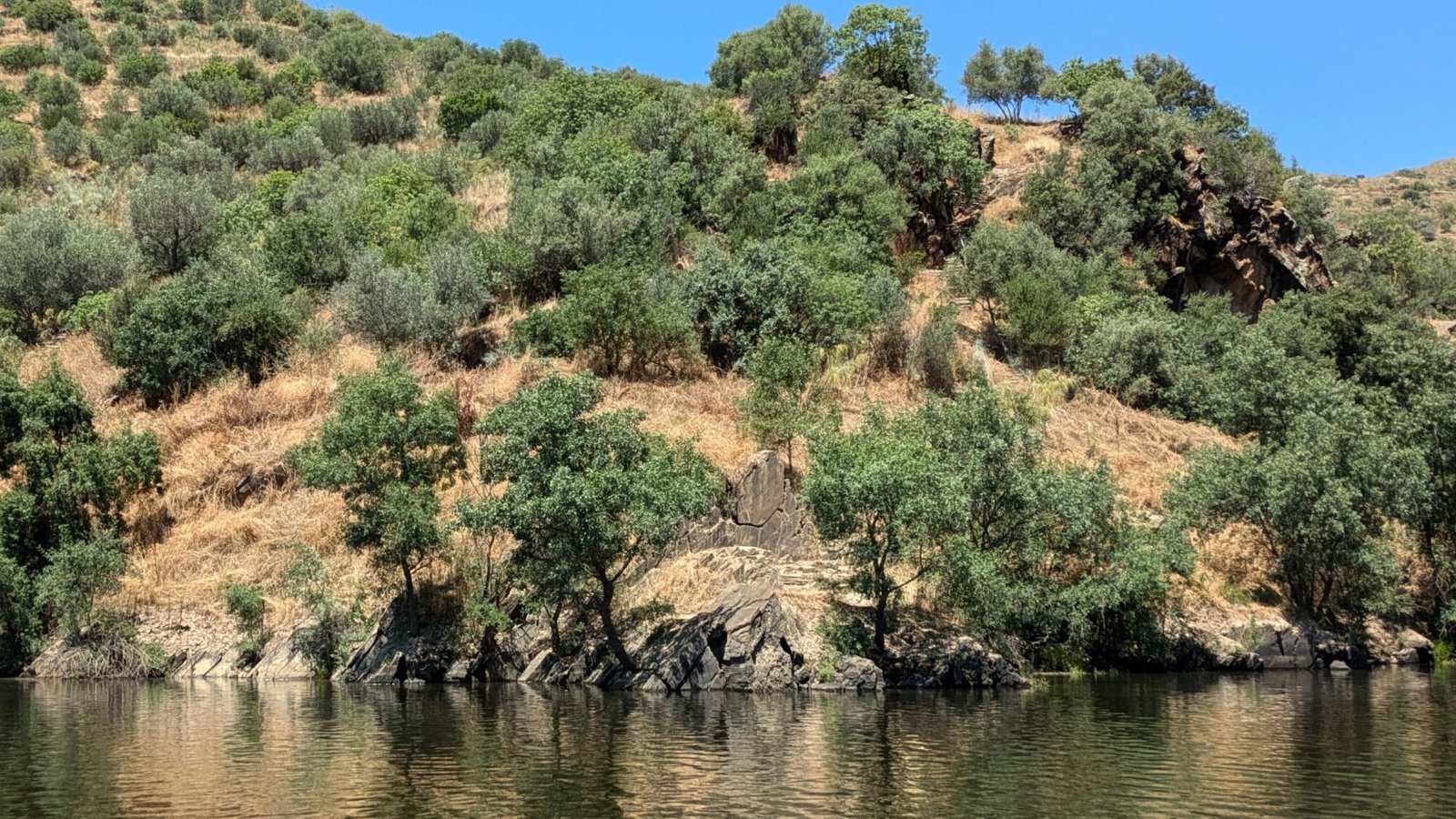
Pingback:Penascosa Rock Art Site - Prehistoric Portugal
Pingback:Fariseu Rock Art Site - Prehistoric Portugal
Pingback:Côa Museum - Prehistoric Portugal
Pingback:Pala da Moura - Prehistoric Portugal